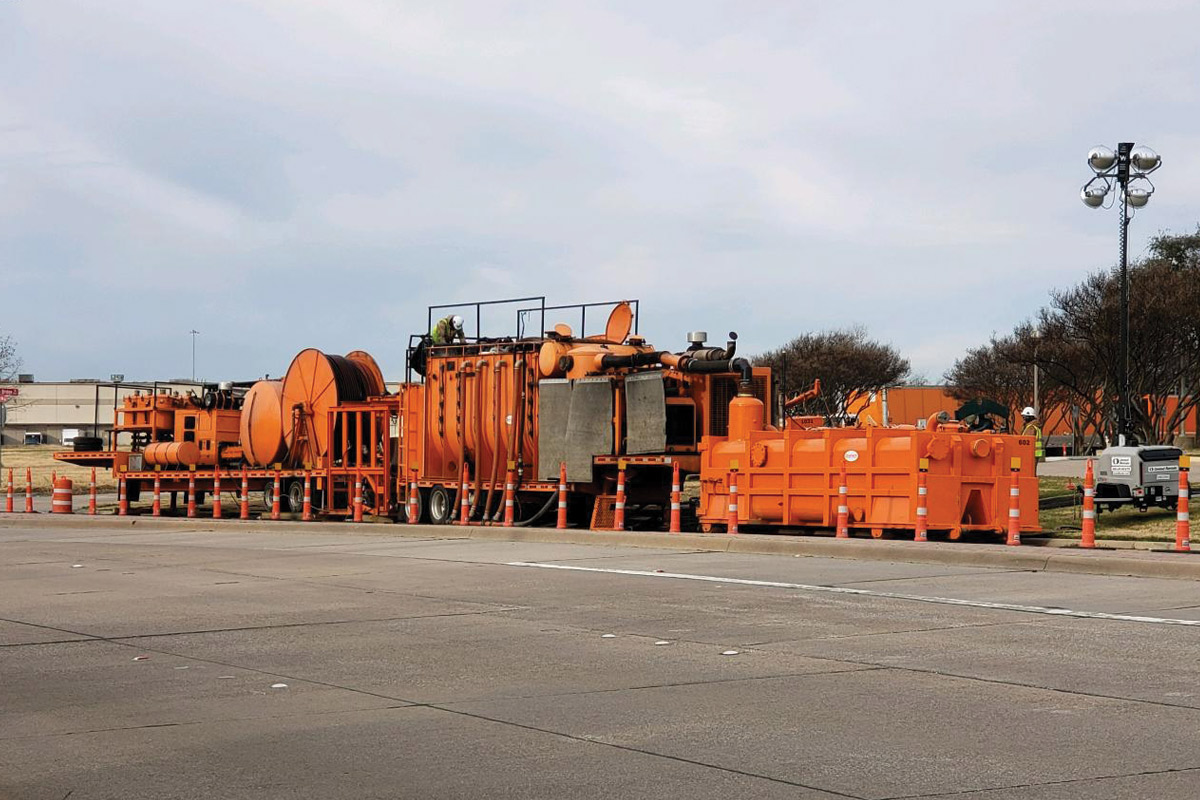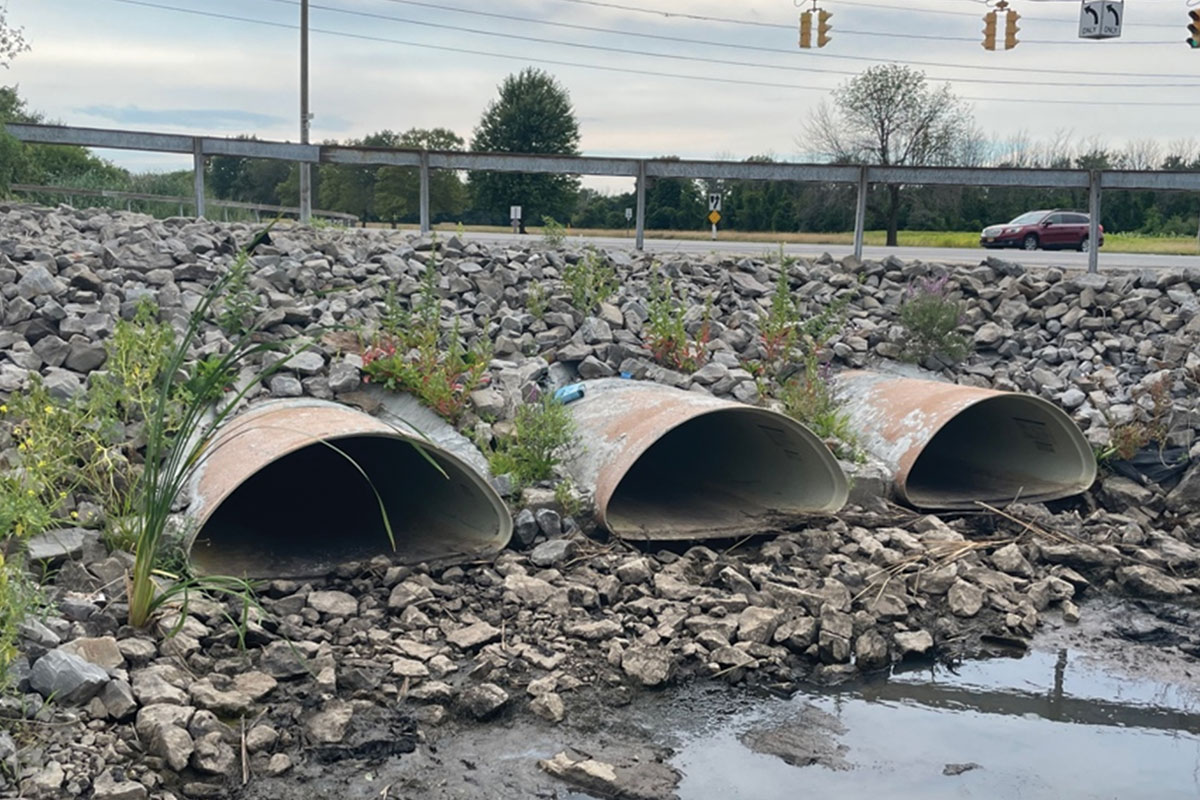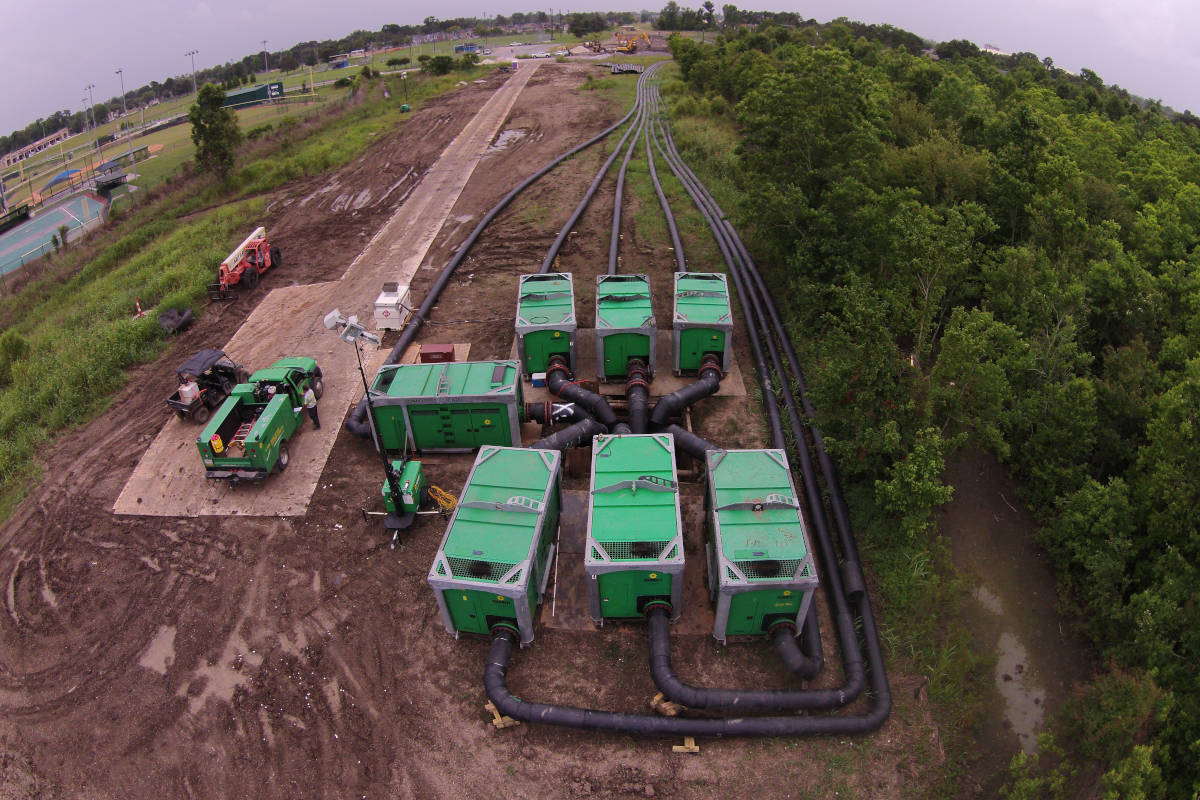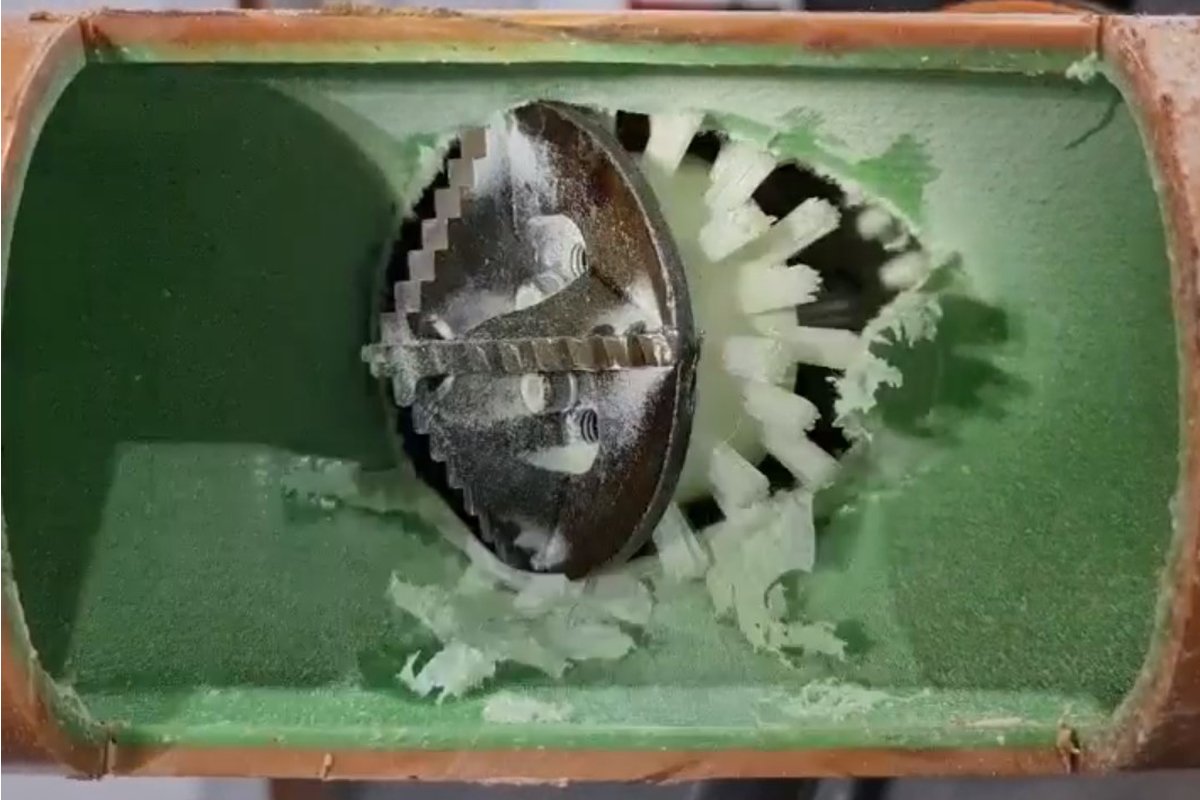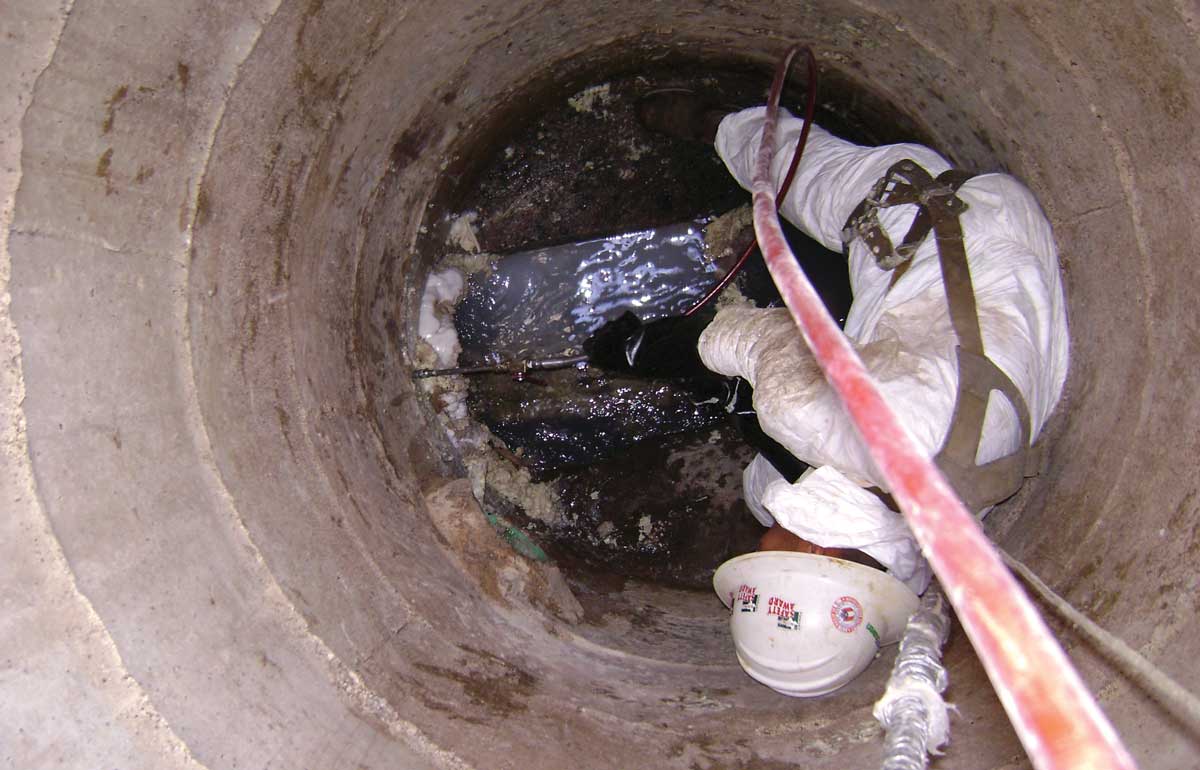
Manhole Rehab – Squaring Off Against I&I with Injection Grouting
Everyone is familiar with the round covers of manholes. You walk past manholes in sidewalks near our homes or schools, you drive over manholes in the middle of busy roadways, you may pass a manhole near wooded areas, and you certainly may see a Teenage Mutant Ninja Turtle jumping out of one to save the day.
Simply put, manholes are everywhere! According to the U.S. EPA, there are an estimated 20 million manholes in our country, the oldest of which are around 150 years old – and still in use! But are you familiar with what lies under the cover?
Manholes are multi-part access portals to an intricate underground system that is essential to making our daily lives go round. They connect to sewer pipes that connect to laterals of homes and businesses, which connect to wastewater treatment plants for treatment and/or disposal of sewerage.
Manholes can often be described as the “low hanging fruit” of the collection system due to their ease of access by humans and equipment. As all these components run as a system, manholes should be regularly assessed to determine the appropriate repair or replacement. If you pop the manhole cover and see visible leaks or signs of past water leaks, it needs to be remedied before further deterioration or worse — complete structural collapse — occurs.
My manhole has a water leak. So what?
An excessive amount of clean groundwater – also called infiltration – that reaches wastewater treatment plants comes directly from manholes. A friendly reminder that infiltration is clean groundwater that gets sent to treatment plants for…treatment. If it sounds redundant and unnecessary, that is because it is.
When infiltration enters manholes through crack, joints, or defects, it brings with it soil fines which can lead to voids in the soil surrounding the manhole that can compromise structural integrity and diminish pipeline capacity. One leak that seems miniscule, but over time that one leak can wreak havoc on the system.
Make sure your manholes are in tip-top shape!
Due to budget constraints, labor shortage, or lack of knowledge on rehabilitation options, infiltration issues can go on for months/ years and remain out of sight, out of mind until major reconstruction is required.
There is no easy guide to manhole rehab and as every below grade structure requires a case-by-case approach – injection grouting, coating, or lining or a combination of these to name a few. In terms of infiltration elimination, injection grouts have been historically proven to be the most economic and long-term solution to combating infiltration.
Average infiltration rates can range between 5 to 10 gallons per minute (gpm) but can be far more excessive with reports of over 100 gpm being an unfortunate normal occurrence. Here’s a quick fictional — but serious — breakdown:
You have one 5 gpm water leak in one manhole that leaks 24/7 for an entire year:
- 5 gpm multiplied by 60 minutes = 300 gallons per hour.
- 300 gallons per hour multiplied by 24 hours a day = 7,200 gallons per day.
- 7,200 gallons per day multiplied by 365 days = 2,628,000 gallons per year
At a conservative cost of $3.50/1,000 gallons to treat wastewater, that is a total annual treatment cost of $9,200 for ONE leak in ONE manhole. Now imagine that times hundreds or thousands of manholes.
Going the grout route
Manholes often leak due to failed pipe penetrations, barrel joints, pick holes, risers, cracks, and construction joints at the bench – all of which can be remedied using injection grouting. Injection grouts are specifically designed to eliminate infiltration in structures that are structurally sound.
Grout is injected through the manhole and into the surrounding soil. The grout permeates the soil, curing with it to create an impermeable, waterproof barrier outside the structure. While stopping infiltration, injection grouts also stabilize the supporting soil outside sewer pipes and manholes by strengthening the soil, filling voids, and providing longer-lasting support.
Additionally, an infiltration free environment is required when coatings or linings are going to be utilized. There are many pros to injection grouting for manhole infiltration control:
- Cost-Efficient – equipment start-up costs are relatively low compared to other trenchless options. Sometimes a cartridge and caulk gun are all that is needed!
- Less Noise Pollution – grouting requires considerably less jobsite footprints and disruption to the surrounding community
- Near Instant Results – Once the grout cures, results are instant
- Permanent Seal – once cured, the grout creates a permanent seal that will likely last the useful life of the structure
- Grout types – there are multiple grout types to suit the project or application in need
- Safe to Use – many injection grouts are NSF/ANSI/CAN 61: Drinking Water System Components – Health Effects certified
Real results for real communities
Trenchless rehabilitation costs can often be redlined off annual budgets for other programs or projects, but persistent infiltration causing increased fees to the ratepayer is what should really be redlined.
A recent case study for a town in North Carolina shows real pre- and post-grouting results for injection grouting of manholes for infiltration control. The town noticed two pump stations were running hours every day on average, and as high as 35 hours during rain events. After further inspection, the town found that manholes connected to the lines leading to the treatment plant were the infiltration culprits causing excessive run times. The town performed injection grouting on 28 manholes, and after immediate assessment found average pump run times went from four hours per day (on dry days) to less than one hour — a 75 percent reduction in pump run time. The pumps running up to 35 hours straight during rain events were down to three hours on average.
This project basically paid for itself in cost savings in roughly the first 30 days post-grouting. The electric cost to power the pump stations went from a three-month average of $452.36 to a three-month average of $313.81. Treatment volume went from a three-month average of 18,300,000 gallons down to 9,000,000 gallons – a reduction of 50.7 percent in treatment volume. Based on the reduction in treatment volume and the cost of treatment, which was $3.62/1,000 gallons, the Town saved approximately $33,000 in treatment costs in addition to electric bill savings over a three-month average.
Injection grouting is the most accessible tool for helping utilities eliminate infiltration, increase capacity, and decrease treatment costs.
Jessica Williams is the marketing manager at Avanti International.

